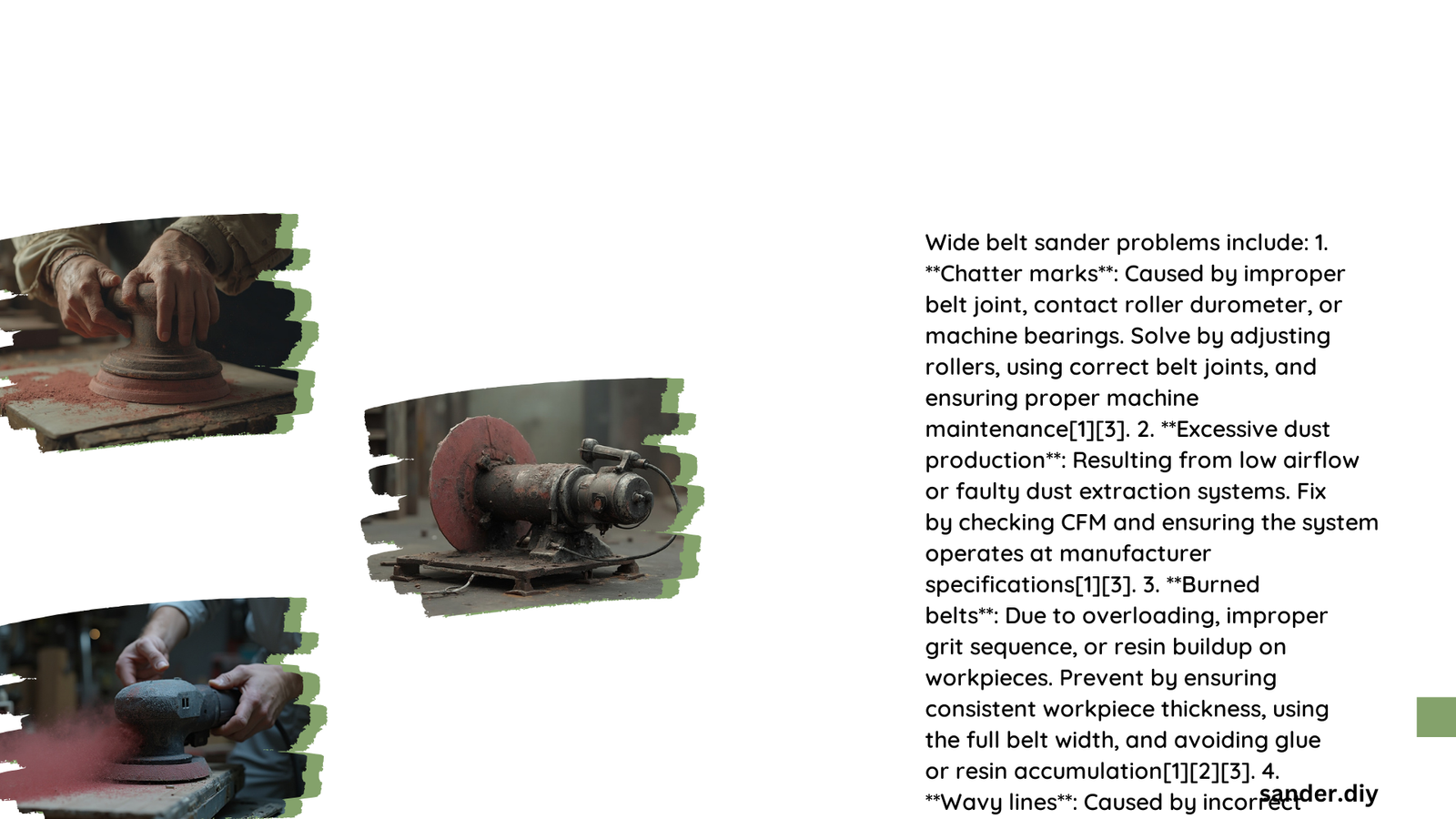Wide belt sanders are essential tools in woodworking and manufacturing, but they can encounter various issues that affect their performance and output quality. Common problems include alignment issues, motor failures, feed problems, and belt tracking difficulties. This comprehensive guide addresses these wide belt sander problems, providing practical solutions and maintenance tips to keep your machine running smoothly.
What Are the Most Common Alignment Issues in Wide Belt Sanders?
Alignment problems in wide belt sanders can significantly impact sanding accuracy and quality. Here are some key issues and their causes:
Causes of Misalignment
- Closing the machine with parts inside: This can lead to:
- Stretched jack chains
- Damaged jack screws
-
Misaligned components
-
Damaged or bent bed plate: Often caused by:
- Running thick parts without proper clearance
- Impact from heavy workpieces
Impact on Sanding Accuracy
- A well-maintained sander should maintain a tolerance of ±0.005 inches
- Misalignment can result in:
- Uneven sanding
- Poor surface finish
- Inconsistent material removal
Alignment Maintenance Tips
| Action | Frequency | Benefit |
|---|---|---|
| Check reference points | Monthly | Ensures consistent alignment |
| Inspect bed plate | Weekly | Prevents damage accumulation |
| Calibrate heads and rollers | Quarterly | Maintains sanding precision |
How to Identify and Prevent Wide Belt Sander Motor Failure?

Motor issues can lead to significant downtime and repair costs. Here’s how to spot and prevent them:
Signs of Motor Failure
- Overheating
- Unusual vibrations
- Strange noises (grinding, screeching)
Causes of Motor Failure
- Overload: Exceeding machine capacity
- Poor maintenance: Neglecting regular checks and servicing
- Electrical issues: Voltage fluctuations or improper wiring
Preventive Measures
- Adhere to manufacturer’s power requirements
- Implement a regular maintenance schedule
- Monitor motor temperature during operation
- Ensure proper ventilation around the motor
What Are the Typical Feed Problems in Wide Belt Sanders?
Feed issues can significantly affect sanding quality and efficiency. Here are common problems and solutions:
Common Feed-Related Failures
- Incorrect feed rates: Too fast or too slow for the material
- Improper material handling: Feeding workpieces outside the machine’s specifications
Troubleshooting Techniques
- Conduct regular visual inspections of the feed system
- Adjust feed rates based on material properties and desired finish
- Ensure proper tension on feed belts
Feed Rate Adjustment Guide
| Material | Recommended Feed Rate (m/min) |
|---|---|
| Softwood | 6-8 |
| Hardwood | 4-6 |
| MDF | 5-7 |
| Particleboard | 3-5 |
How to Make Proper Belt Tracking Adjustments?
Correct belt tracking is crucial for even sanding and prolonged belt life. Follow these steps:
Step-by-Step Belt Tracking Procedure
- Check belt tension using the formula:
Abrasive Belt Tension = (Tension Cylinder Area × Gauge Pressure) / Belt Width - Inspect roller alignment with a digital indicator
- Adjust tracking mechanism while the belt is running slowly
- Observe belt movement and make fine adjustments
Required Tools for Belt Tracking
- Digital indicator
- Belt tension gauge
- Alignment tools (specific to your sander model)
Impact of Improper Tracking
- Premature belt wear or damage
- Uneven sanding results
- Potential damage to sander components
By addressing these wide belt sander problems promptly and implementing regular maintenance, you can ensure optimal performance and longevity of your machine. Remember to always consult your sander’s manual for model-specific guidance and safety instructions.
References:
1. https://www.houfek.com/en/wide-belt-sander-maxx-4-1300
2. https://surfprepsanding.com/why-wont-my-sanding-machine-stay-level/
3. https://www.fintechabrasives.com/blog/fintech-blog-1/common-wide-belt-sander-issues-solutions-4
